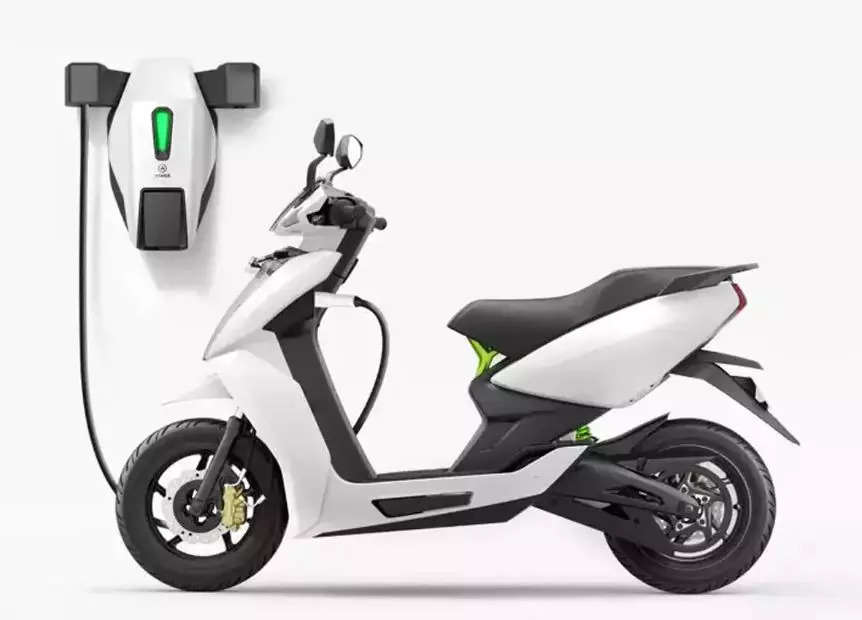
New Delhi:The second edition of India’s purchase subsidy scheme for electric two-wheelers (E2W), operational since 2019 to boost sales, has been mired in one controversy after another. So the news about an internal probe into the goings on within the Ministry of Heavy Industries (MHI), the administrative ministry doling out purchase subsidies, and into alleged lapses by ministry officials in the Faster Adoption and Manufacturing Electric Vehicles (FAME) II scheme, is a relief for many e2W startups.
But the probe should not lead to suspension of the subsidy regime. Already, the EV industry has urged the government, in unison, to continue with the subsidy regime for at least another three-four years, till EVs account for a fourth of all vehicle sales in the domestic market.
At the ETAutoEVC, Ashish Kundra, Principal Secretary of the Delhi government, said three-wheelers and two-wheelers, in particular, need support and state governments were unlikely to withdraw incentives. “Even the Centre may not,” he said.
Sulajja Firodia Motwani, Founder & CEO of Kinetic Green said that India had begun well on the EV trail but was not even half done yet, with low overall EV penetration and demand creation within the electric vehicle space remaining a challenge. “We need to ensure that the customer sees a benefit in buying EVs and it is certainly too early to withdraw any incentives,” she said. Motwani gave the example of several other countries where support in the form of incentives has continued till their penetration reached 25%
Meanwhile, Heavy Industries Minister Mahendra Nath Pandey was quoted saying that “We are enquiring into the lapses, if any, by all officials involved in the process”.
While no further details of this enquiry were immediately available, E2W startups facing the brunt of subsidy misappropriation allegations have heaved a sigh of relief.
A person closely involved with the fracas, in which 13 E2W startups were slapped with penalties and then denied subsidy reimbursements, told ETAuto on condition of anonymity, “We are given to understand that an internal probe has been ongoing for three-four months. But what is the point of this enquiry unless it goes back to probe officials under whose watch the muck started? The entire set of decision-makers has been changed. Meanwhile, the FAME II scheme has been thoroughly discredited and a question mark hangs over further incentivisation of electric two wheelers”.
What happened
The story began in 2019 when the second edition of FAME was launched. The scheme offered subsidies on E2W sales, of up to 35-40% of the vehicle cost. The subsidy was made available to the customer at the point of purchase and OEMs could, after paying first, claim this amount from the government subsequently. The subsidies under FAME II were, however, conditional on achieving mandatory localisation up to 50%. The scheme was structured in such a manner that the subsidy release by the government was to happen only after its own certified testing agencies had checked a random sample of products for compliance with all the conditions.
Things worked well between 2019 and late 2021 but then, a flurry of anonymous emails, alleging subsidy misappropriation by a few E2W startups, landed in the inboxes of key officials of the ministry of heavy industries. Theories abound about who initiated these anonymous mails, with one industry insider pointing to competitors. Anyway, the allegations against the startups were about non-compliance with the mandatory localisation norms.
The person quoted earlier said that the allegations in these anonymous mails pertained to 2021, when Covid19 had stalled the economy and enhanced localisation was simply out of the question due to severe restrictions. He also said that the usual practice being followed till then was a quarterly reprieve from the ministry to the industry in adhering to localisation norms.
“The communication allowing such a reprieve usually came after some months but was applicable retrospectively. So the E2W startups continued to avail subsidy, hoping that another reprieve would arrive,” this person said. For such reprieves had been given before alarm bells began ringing, he said.
Questions abound
When the ministry began a crackdown on the E2W startups, alleging subsidy misappropriation in April 2022, questions arose about how the disbursal continued through the initial months of that year if there were indeed violations of localisation norms? How come the government’s own testing agencies had not flagged the issue, since subsidies were contingent upon checks conducted by these very testing agencies?
Anyway, even as the ministry stopped subsidy disbursements pending an enquiry, the E2W startups continued to pay the subsidies from their own pockets to keep up sales while demanding resumption of the payments from the government.
By now, several uncomfortable questions were being asked. Why were only some E2W OEMs found to be violating localisation norms, why were a select few asked to return the subsidy amounts already availed etc. The subsidy amount withheld by the ministry is believed to be about INR 1200 crore.
In the midst of this drama, the ministry was again made privy to yet another anomaly – some large 2W manufacturers were allegedly under-invoicing products to claim subsidies. These companies were not in the list of those against whom action had already been initiated and subsidies stopped. The new set of alleged offenders were found to be keeping the vehicle price tag at the INR 1.5 lakh cut-off price or lower while bundling chargers and some software separately, charging up to INR 35000-40000 extra. Here again, the ministry was forced to take cognisance of this subsidy misappropriation and these OEMs were made to refund the money for chargers etc to customers.
What now?
Unconfirmed reports suggest that some heads have already rolled within the testing agencies tasked with checking localisation compliance. An email sent to the Secretary, Ministry of Heavy Industries and to the ministry spokesperson remained unanswered till the time of writing this article. It is pertinent to remember that the first two years of FAME II could not really kick-start E2W sales. Only when the subsidy quantum was increased from INR 10,000 per KW battery to INR 15000 per KW alongside an increase in overall ceiling from 20% of vehicle price to 40% in 2019 that sales took off. So, higher subsidies led to sales growth and now, when once again the subsidy quantum has been reduced, sales of E2W are sputtering.
The FAME II scheme is ending in March next year and the E2W manufacturers are worried about any continuation of purchase incentives. Though there have been multiple discussions about a third edition of FAME, whether it fructifies in an election year and whether it accords the same level of subsidy for E2W as the existing scheme, remain to be seen.
Besides, with the various hiccups already seen in FAME II subsidy disbursal, there is an apprehension that stricter norms on localisation would be included in the next scheme on localisation.

